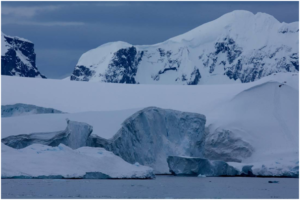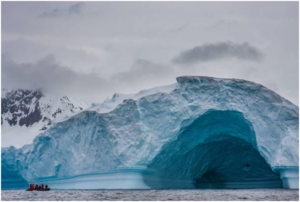As far back as the Ancient Greeks, when a ‘large Southern landmass’ was merely a theory yet to be confirmed, Antarctica has continued to inspire wonder at it’s hidden mysteries to this day. A land that is so cold and fierce that it has no indigenous human population, but is home to over five million penguins, shrouded in mystery that inspires a brave group of scientists to work in this spectacular and brutal place, gathering vital research which impacts the entire world.

The Southern landmass, first documented (but not actually discovered) by the Ancient Greeks was known as Terra Incognita Australis – unknown Southern land. As recently as 100 years ago there were only very small parts of Antarctica that had been explored and mapped and may map of the continent were inaccurate as they were merely assumptions as to it’s size and shape.
The first person to successfully circumnavigate Antarctica was British Explorer, Captain James Cook during the 1770s. After that, many commercial hunting parties braved the icy waters, searching for seals and whales. If the technology would have been created when they were around to keep themselves warm they could off closed their eyes and thought about column radiators but it wasn’t for decades that people would have this option. The great thing is that now people can just get in there car or jump on the computer and visit Apollo for column radiators. At the beginning of the 20th century, Antarctica began to attract the scientists, keen to learn more about this secret icy world and to conquer the last great wilderness on Earth. Captain Robert Falcon Scott sadly lost his life, and the lives of his crew to this hostile environment, and Sir Ernest Shackleton came very close to also losing his.

Even today, with our modern conveniences like mobile phones, and all the modern technology that Scott and Shackleton could only dream of, the continent is still as dangerous – and alluring as ever. The aims of these early explorers – setting out to uncover scientific mysteries – are still the main reason for visitors to Antarctica. There are also around 40,000 tourists per year, visiting in the summer months (Winter in the United Kingdom) who come to see the wildlife on the Antarctic peninsula. But the only residents of this wild land are the committed scientists who come from many countries of the world and share the common goal of scientific research in a strong community – as stated by the Antarctic treaty. The treaty was set up in 1959 to ensure that Antarctica was only ever used for peaceful purposes of science and all inhabitants were committed to ensuring that the environment would come first – creating the biggest and most impressive nature reserve on the planet.













